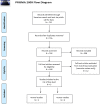Re-evaluation of neohesperidine dihydrochalcone (E 959) as a food additive
- PMID: 36406883
- PMCID: PMC9669802
- DOI: 10.2903/j.efsa.2022.7595
Re-evaluation of neohesperidine dihydrochalcone (E 959) as a food additive
Abstract
The present opinion deals with the re-evaluation of neohesperidine dihydrochalcone (E 959) when used as a food additive. It is obtained by catalytic hydrogenation of a flavanone - neohesperidine - which is naturally occurring and thus isolated by alcohol extraction in bitter oranges (Citrus aurantium). Based on in vivo data in rat, neohesperidine dihydrochalcone is likely to be absorbed, also in humans, and to become systemically available. It does not raise a concern regarding genotoxicity. The toxicity data set consisted of studies on subchronic and prenatal developmental toxicity. No human studies were available. The data set was considered sufficient to derive a new acceptable daily intake (ADI). Based on the weight of evidence (WoE) analysis, the Panel considered unlikely that neohesperidine dihydrochalcone would lead to adverse effects on health in animals in the dose ranges tested. The Panel also considered that a carcinogenicity study was not warranted and that the lack of human data did not affect the overall confidence in the body of evidence. The Panel derived an ADI of 20 mg/kg bodyweight (bw) per day based on a no observed adverse effect level (NOAEL) of 4,000 mg/kg bw per day from a 13-week study in rat, applying the standard default factors of 100 for inter- and intraspecies differences and of 2 for extrapolation from subchronic to chronic exposure. For the refined brand-loyal exposure assessment scenario, considered to be the most appropriate for the risk assessment, the exposure estimates at the mean ranged from < 0.01 to 0.09 mg/kg bw per day and at the 95th percentile (P95) from 0.01 to 0.24 mg/kg bw per day. Considering the derived ADI of 20 mg/kg bw per day, the exposure estimates were below the reference value in all age groups. Therefore, the Panel concluded that dietary exposure to the food additive neohesperidine dihydrochalcone (E 959) at the reported uses and use levels would not raise a safety concern.
Keywords: E 959; food additive; neohesperidine dihydrochalcone; sweetener.
© 2022 Wiley‐VCH Verlag GmbH & Co. KgaA on behalf of the European Food Safety Authority.
Figures





Similar articles
-
Flavouring group evaluation 420 (FGE.420): Hesperetin dihydrochalcone.EFSA J. 2024 Dec 4;22(12):e9091. doi: 10.2903/j.efsa.2024.9091. eCollection 2024 Dec. EFSA J. 2024. PMID: 39633873 Free PMC article.
-
Re-evaluation of benzyl alcohol (E 1519) as food additive.EFSA J. 2019 Oct 30;17(10):e05876. doi: 10.2903/j.efsa.2019.5876. eCollection 2019 Oct. EFSA J. 2019. PMID: 32626148 Free PMC article.
-
Re-evaluation of propane-1,2-diol (E 1520) as a food additive.EFSA J. 2018 Apr 5;16(4):e05235. doi: 10.2903/j.efsa.2018.5235. eCollection 2018 Apr. EFSA J. 2018. PMID: 32625872 Free PMC article.
-
Dietary glycation compounds - implications for human health.Crit Rev Toxicol. 2024 Sep;54(8):485-617. doi: 10.1080/10408444.2024.2362985. Epub 2024 Aug 16. Crit Rev Toxicol. 2024. PMID: 39150724
-
Safety and nutritional assessment of GM plants and derived food and feed: the role of animal feeding trials.Food Chem Toxicol. 2008 Mar;46 Suppl 1:S2-70. doi: 10.1016/j.fct.2008.02.008. Epub 2008 Feb 13. Food Chem Toxicol. 2008. PMID: 18328408 Review.
Cited by
-
Unveiling the profound influence of sucralose on metabolism and its role in shaping obesity trends.Front Nutr. 2024 Jul 2;11:1387646. doi: 10.3389/fnut.2024.1387646. eCollection 2024. Front Nutr. 2024. PMID: 39015535 Free PMC article. Review.
-
Natural Compounds for Bone Remodeling: A Computational and Experimental Approach Targeting Bone Metabolism-Related Proteins.Int J Mol Sci. 2024 May 6;25(9):5047. doi: 10.3390/ijms25095047. Int J Mol Sci. 2024. PMID: 38732267 Free PMC article.
-
Flavouring group evaluation 420 (FGE.420): Hesperetin dihydrochalcone.EFSA J. 2024 Dec 4;22(12):e9091. doi: 10.2903/j.efsa.2024.9091. eCollection 2024 Dec. EFSA J. 2024. PMID: 39633873 Free PMC article.
-
Neohesperidin Dihydrochalcone Alleviates Lipopolysaccharide-Induced Vascular Endothelium Dysfunction by Regulating Antioxidant Capacity.Immun Inflamm Dis. 2024 Dec;12(12):e70107. doi: 10.1002/iid3.70107. Immun Inflamm Dis. 2024. PMID: 39699295 Free PMC article.
-
Assessment of the feed additive neohesperidine dihydrochalcone for piglets, pigs for fattening, calves, sheep, fish and dogs for the renewal of its authorisation (HealthTech Bio Actives S.L.U.).EFSA J. 2025 Apr 10;23(4):e9358. doi: 10.2903/j.efsa.2025.9358. eCollection 2025 Apr. EFSA J. 2025. PMID: 40212533 Free PMC article.
References
-
- Agriculture and Environment Research Unit, University of Hertfordshire , Lewis KA and Tzilivakis J, 2021. Review and synthesis of data on the potential environmental impact of artificial sweeteners. EFSA supporting publication 2021;EN‐6918, 127 pp. 10.2903/sp.efsa.2021.EN-6918 - DOI
LinkOut - more resources
Full Text Sources
Research Materials
Miscellaneous
